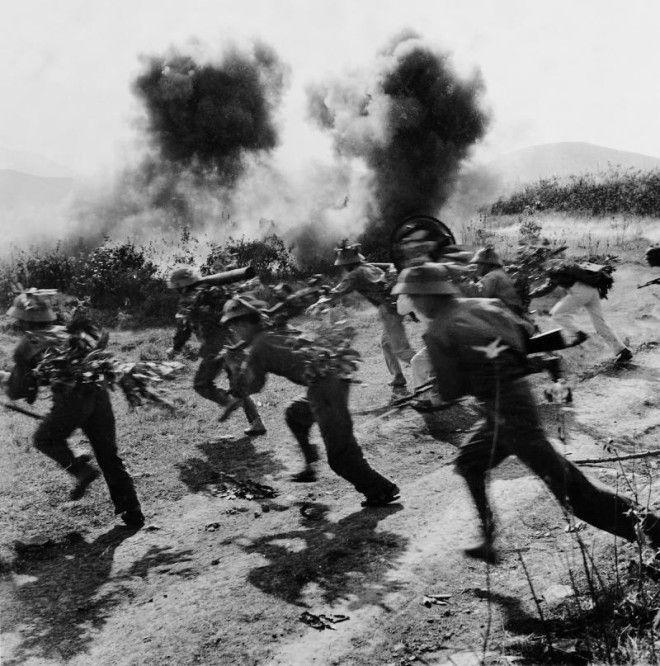These photographers worked for the Vietnam News Agency, the National Liberation Front, or the North Vietnamese Army. They were mostly self-taught, and their work gives striking and thought-provoking perspectives from behind Viet Cong and North Vietnamese lines.
Iconic photographs, like Eddie Adams’ image of a Viet Cong fighter being executed, Nick Ut’s picture of nine-year-old Kim Phúc fleeing a napalm strike, or Malcolm Browne’s photo of Thích Quang Duc self-immolating in a Saigon intersection, have penetrated our visual consciousness of what this war was.
It’s fascinating to add new, previously undiscovered photographs, and uncover the photographers who were working under fire.
1974Women haul in heavy fishing nets on the upper branch of the Mekong River, taking over a job usually done exclusively by men.
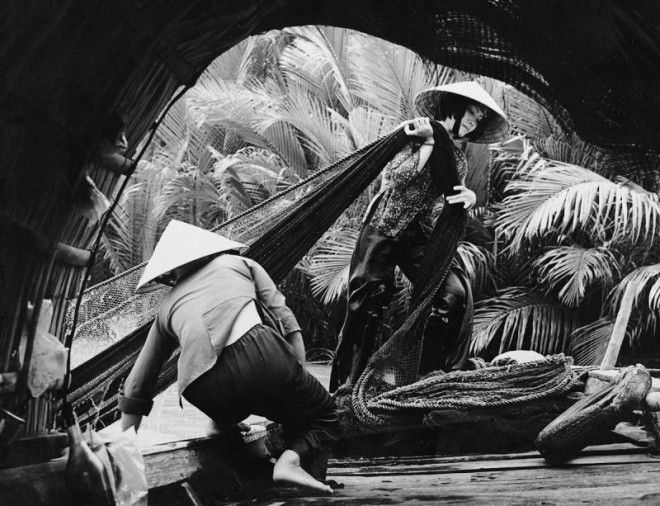
A guerrilla in the Mekong Delta paddles through a mangrove forest defoliated by Agent Orange. The Americans denuded the landscape with chemicals to deny cover to the Viet Cong. The photographer was sickened by what he saw, since the Vietnamese regard mangrove forests as bountiful areas for agriculture and fishing.
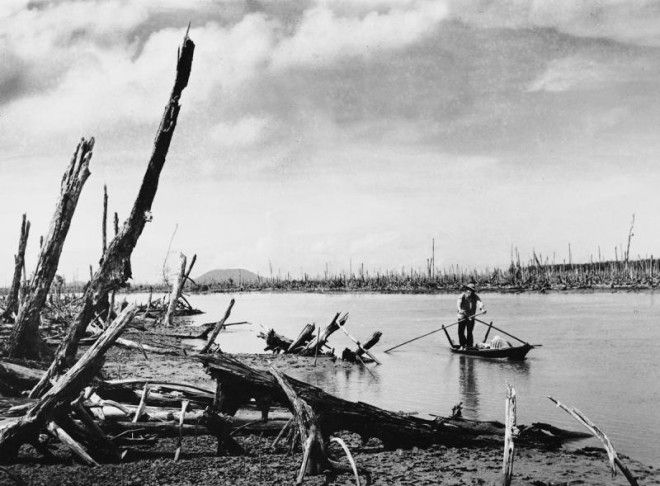
1972Activists meet in the Nam Can forest, wearing masks to hide their identities from one another in case of capture and interrogation. From here in the mangrove swamps of the Mekong Delta, forwarding images to the North was difficult. “Sometimes the photos were lost or confiscated on the way,” said the photographer.
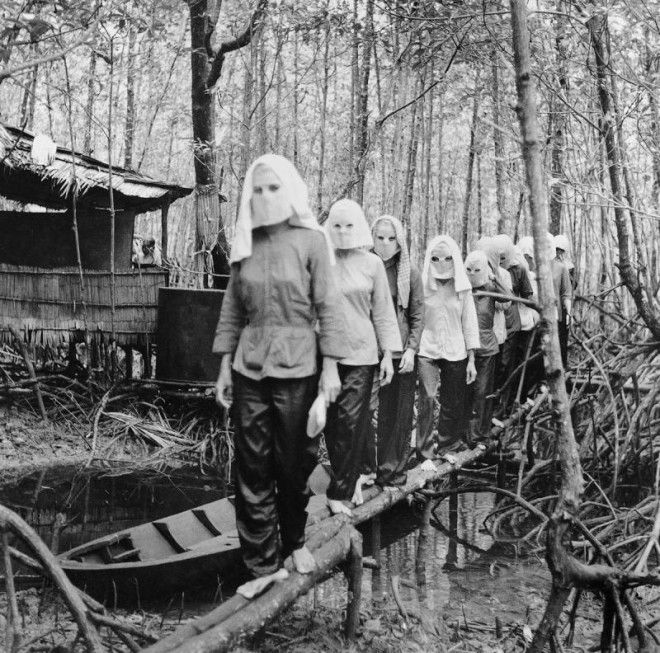
1972Guerillas guard an outpost on the Vietnam-Cambodia border protected by poisoned bamboo punji stakes. Sharpened then hardened with fire, punji stakes were often hidden where enemy soldiers would step on them. Such booby traps were meant to wound, not kill, because wounded soldiers slowed down their unit, and medevacs gave away its position.
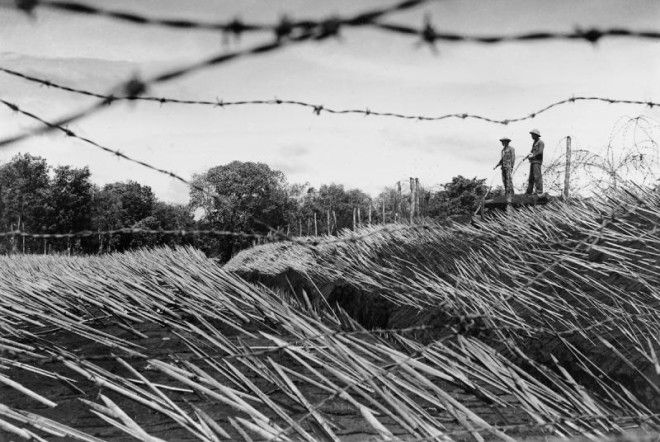
Date unknownViet Cong meet the enemy face-to-face, most likely in the Mekong Delta or Plain of Reeds. This rare image shows both sides in combat, ARVN soldiers at the top and Viet Cong in the foreground. The VC have flanked the enemy at left and right, which likely meant the ARVN unit was wiped out.

1973A Viet Cong guerrilla stands guard in the Mekong Delta. “You could find women like her almost everywhere during the war,” said the photographer. “She was only 24 years old but had been widowed twice. Both her husbands were soldiers. I saw her as the embodiment of the ideal guerrilla woman, who’d made great sacrifices for her country.”
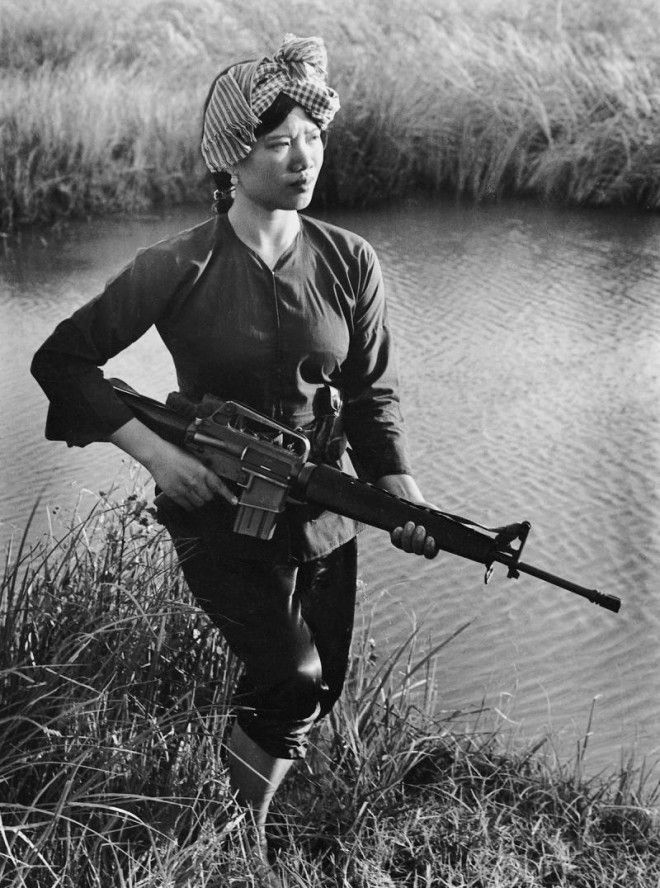
June 1972Militia members sort through the debris of an American plane downed by small-arms fire in the Hanoi suburbs. The pilot had been flying at treetop level to avoid radar detection, but such low-flying planes were more vulnerable to small arms. U.S. planes targeted Hanoi industrial sites, but most industries were relocated to the countryside.

July 1967New recruits undergo physical examinations in Haiphong. The North’s volunteer system was transformed into a mandatory system in 1973, when all able-bodied males were drafted. From a corps of around 35,000 men in 1950, the NVA grew to over half a million men by the mid-’70s, a force the U.S. military conceded was one of the finest in the world.
Advertising

September 1965
Using overhead targets, a militia company practices firing ahead of speeding aircraft in Thanh Tri. Even using antiquated WWII rifles such as these, the Vietnamese were able to cripple or down many U.S. aircraft. This militia group, Company #6 of the Yen My Commune, earned the title of “Excellent Militia” three years in a row.

1973Construction workers discuss repairs of the bombed out Ham Rong Bridge, in central North Vietnam. The only route across the Ma River for heavy trucks and machinery, the bridge was heavily defended, and several U.S. planes were shot down nearby. An American MIA search team found pilot remains there.
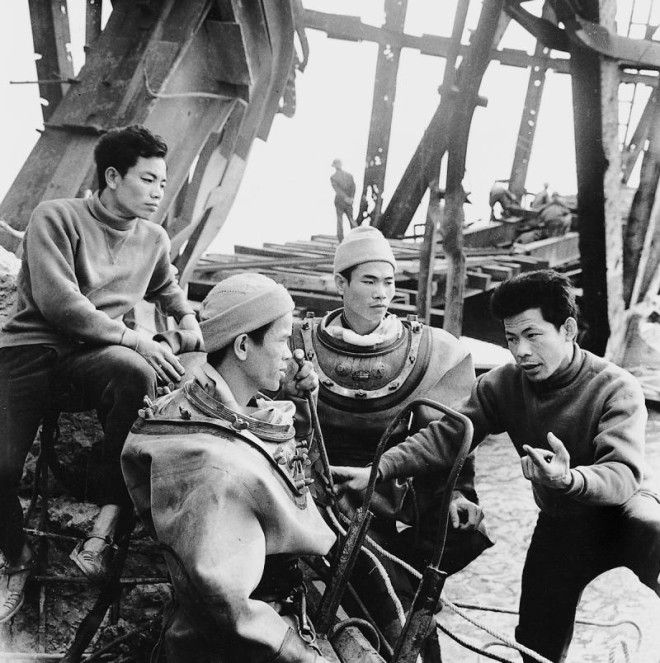
April 30, 1975Combat boots litter the road on the outskirts of Saigon, abandoned by ARVN soldiers who shed their uniforms to hide their status. “I’ll never forget the shoes and the loud ‘thump, thump, thump’ sound as we drove over them,” recalled the photographer. “Decades of war were over and we finally had peace.”

May 1975Elders from North and South embrace, having lived to see Vietnam reunited and unoccupied by foreign powers.

1966Troops walk the Ho Chi Minh Trail in the Truong Son Mountains, which form the 750-mile-long spine of Vietnam, stretching along much of the country’s western border. To the soldiers of the North, the Ho Chi Minh Trail was known as the Truong Son Road.

March 1971Laotian guerrillas haul supplies by elephant and foot to NVA troops near Route 9 in southern Laos during South Vietnam’s attempted interdiction of the trail. The invasion, Operation Lam Son 719, was intended to test ARVN’s ability as U.S. support was winding down. It proved disastrous, with Southern troops fleeing in panic.
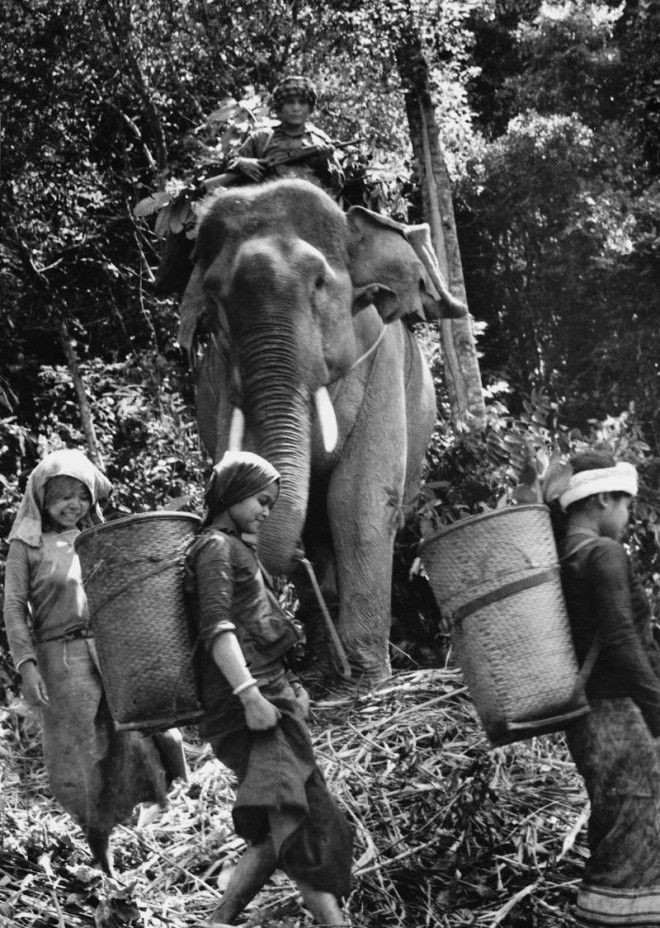
Sept. 15, 1970A victim of American bombing, ethnic Cambodian guerrilla Danh Son Huol is carried to an improvised operating room in a mangrove swamp on the Ca Mau Peninsula. This scene was an actual medical situation, not a publicity setup. The photographer, however, considered the image unexceptional and never printed it.

1972NVA soldiers dash across open ground near strategic Highway 9 in southern Laos during Operation Lam Son 719, the South’s failed attempt to cut the Ho Chi Minh Trail.
